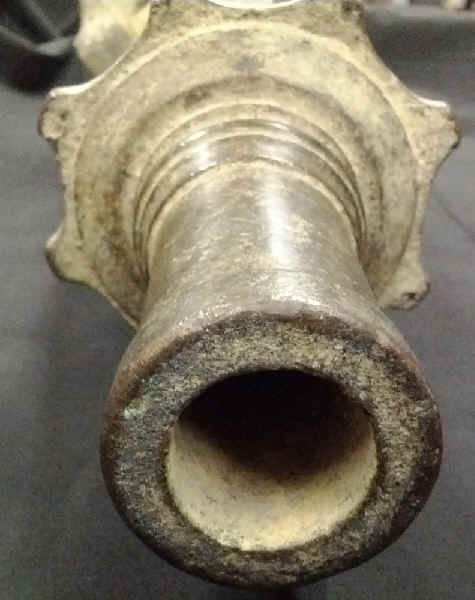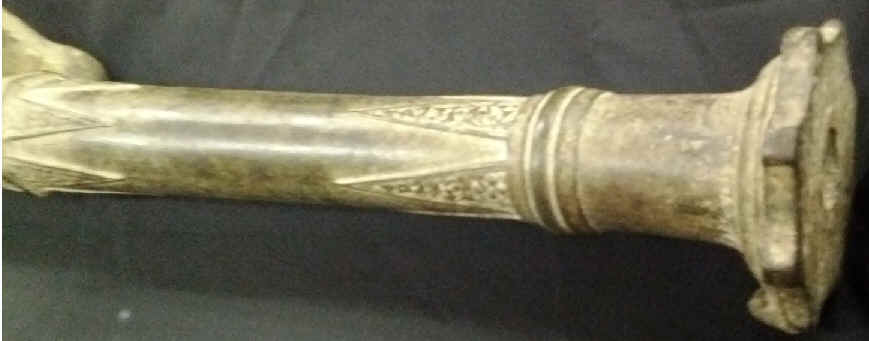Koperen Lantaga kanon
 


Shown here is a Portuguese Lantaka Rail Cannon. It was discovered by one of the
founders of the Hunley. I was told this dates between 1600 and 1740. It's 32 1/2 inches
long. As you can see it is in excellent condition. ebay,
27 feb 2012, US $2.000,00 [ 0 biedingen ] (EUR 1.514,23) justinfolly |
|
http://cannonsuperstore.com/lantakas.htm
The Swivel Rail Cannon or Lantaka types of cannon were produced throughout Malaysia,
Indonesia, Brunei, the Philippines (Mindanao), and also in Holland. Although the somewhat
generic term “Lantaka” may be derived from a Malaysian dialect, it is generally
applied to cannons of this unique design. They are usually not longer than 2 meters (6.5
feet); they have a unique first reinforce octagonal design and a heavy swivel at the
trunnion. They usually have a short tube at the breech for inserting a long wood rod
enabling the gunner to train the gun and stand back from it.
These cannons may be as small as six inches in length (Although most average out at two
to four feet). We have seen rare examples as long as nine feet! Most of these highly
prized collectables are working cannons that have been extensively used in salutes,
ceremonial firings, conflicts, as well as a form of local currency. The more cannons a man
possessed the greater his wealth and he “paid” for a wife, a water buffalo, or
whatever with a certain “weight” of cannons!
Usually the better quality Lantakas were cast by the Dutch and Portuguese colonials
after 1650. Finer detail, design, and quality control prevailed as many were founded in
Holland for export to the Spice Islands. A number of foundries were also located in Java
and Sumatra, in particular, Batavia (Now Jakarta) – which was the capital of the
Dutch East India Company in Indonesia.
These guns were primarily used as “currency” for trading for spices. The
Portuguese Lantaka were usually cast in Malaysia and Borneo (What is now Brunei) up to the
early 1600's. They were not as refined as the Dutch but rather set the standard design
which the Dutch would later replicate, embellishing them with various designs. These
cannon can occasionally be viewed in the more remote villages throughout the Indonesian
and Malaysian archipelago.
The most extraordinary examples of intricate designs are found in Brunei, where they
have recently been banned from export. There are over 3,000 of these fantastic cannons
located in the armory of the Royal Brunei Museum, with about 36 currently on display.



